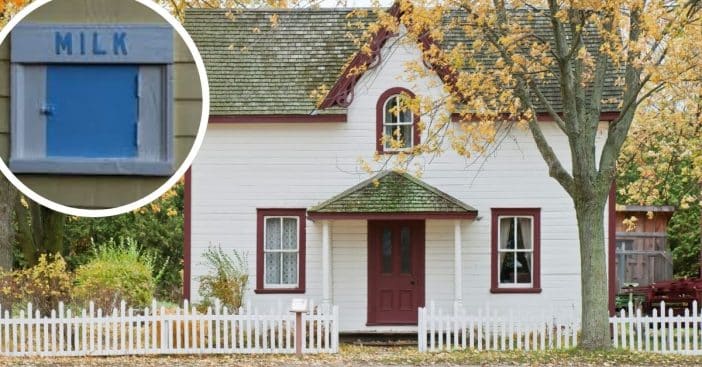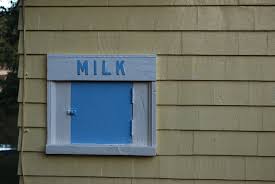
Many features have come and gone within the blueprint of the ideal home. But their ghosts remain in various forms, from the pipes of a central vacuum system to landline phone jacks. But one vintage feature is befuddling some homeowners across generations: milk doors.
The milk door has the unique status of being not just an architectural change but symbolizing a different norm from a different time. Milk delivery used to be far more common in the United States and to make the service even more convenient, designers included a milk door through which dairy products could be transferred from deliveryman to homeowner. So, what happened to this helpful feature, and what should people know before plugging theirs up?
Advances in technology saw the milk door fall out of service
Back in the day, reliable refrigeration wasn’t always an accessible option. Enter the milkman, armed with the day’s latest delivery of dairy products. Those who experienced this scenario firsthand can probably remember the sound of glass—blessed glass—bottles rattling gently together, the feel of the wood crate, and of course the taste of a fresh, cool glass of milk.
RELATED: 12 Surprising Items That You Never Knew You Should Actually Be Keeping In The Refrigerator
Familial circumstances also contributed to needing a service like this, such as when there was only one car, usually not at home but rather at work.
It was an efficient process. The milkman would unlatch the exterior part of the milk door, place the order inside, which Apartment Therapy notes often came with butter, then latch up the outer door. Inside the home, someone could open the interior door and retrieve their goods. Don’t forget to wash and return the bottles!
However, refrigeration options got better. Even to this day, the internet is wowed by that ‘50s Frigidaire ad that promises more features than most modern appliances, all built to actually last a lifetime. With this improvement, however, the need and frequency of milk delivery services steadily decreased. Milk came in with the latest load of groceries and stayed fresh in the fridge. Milk doors remained part of many older homes but were quietly ignored. However, they might just get a second life.
Still using tools from decades ago, repurposed for this new world

Both Apartment Therapy and The Hypertufa Gardener raise an interesting point that homeowners might consider before plugging up their milk door for good. Yes, some places do still offer milk delivery services. But even if that isn’t available, the milk door could be handy. Deliveries are still common—now more than ever, with the advent of Amazon, plus the more recent memory of the pandemic, social distancing, and ordering whenever travel was not possible.
So, it’s been posited, can the milk door serve as a cubby through which to slip in smaller Amazon deliveries? Apartment Therapy considers it a topic to discuss with your delivery service of choice and that it may be an ideal strategy for small enough packages, and even safest for some goods.
In fact, the rise in porch piracy has made secure hand-overs like this feel all the more appealing. The Hypertufa Gardener suggests that even if an existing milk door does not accommodate packages sufficiently, perhaps the general idea can be one refitted, literally, to modern deliveries. But, the outlet emphasizes, it woul dbe important to not let the door size be too big, lest someone try and enter a home that way.
Did or do you have a home that has a milk or ice door?

